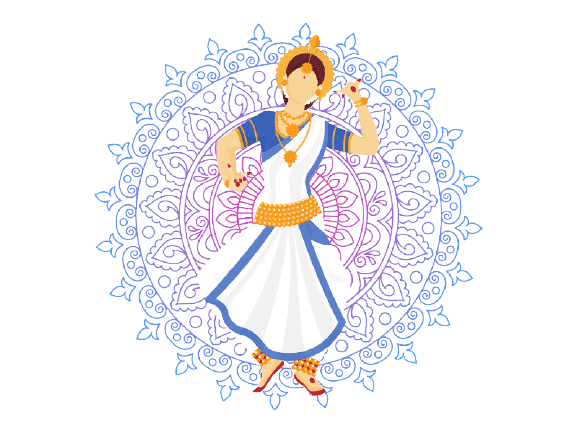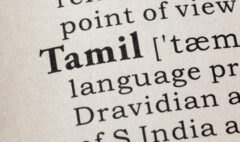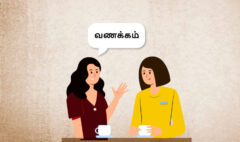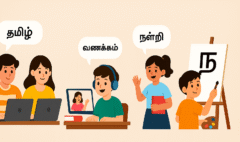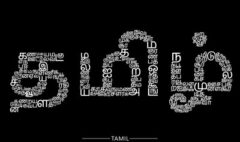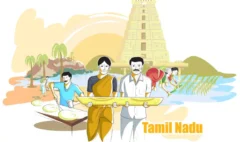The Beauty of Tamil Literature: From Ancient to Modern Times
The Beauty of Tamil Literature: From Ancient to Modern Times
The Beauty of Tamil Literature: A Journey from Ancient Sangams to Modern Voices
The literature of a language is the repository of its soul. It is where the deepest thoughts, the most profound philosophies, and the most enduring stories of a culture are preserved and celebrated. In this grand global library, the history of Tamil literature (தமிழ் இலக்கியம் – Tamiḻ ilakkiyam) holds a place of extraordinary distinction. It is one of the oldest, richest, and most unbroken literary traditions in the entire world. Recognized as a classical language by the Government of India, Tamil boasts a literary history that stretches back for more than two millennia, a continuous and vibrant stream of creativity that flows from the ancient Sangam poets to the powerful voices of modern Tamil literature.
To explore this literary heritage is to embark on a breathtaking journey through time. It is to listen to the voices of kings and poets from two thousand years ago, and to see how their ideas and their language have evolved, yet remained deeply connected to the present. This guide will provide a brief introduction to the vast and beautiful landscape of Tamil literature, highlighting some of the key periods and the most famous Tamil authors whose works have defined this incredible tradition. For any student of the Tamil language, an appreciation of its literary tradition is essential for a deeper understanding of the beauty and the power of the language.
The Dawn of a Tradition: The Sangam Era (சங்க காலம்) (c. 300 BCE to 300 CE)
The earliest surviving body of Tamil literature comes from the Sangam period. The legend speaks of three great “Sangams” or academies of poets and scholars who gathered in the city of Madurai to create and judge literature. The works from this period are a collection of over 2,000 poems, composed by hundreds of different poets.
- The Themes of Akam and Puram: The Sangam poems are broadly categorized into two main themes:
- அகம் (Akam): This refers to the “interior” or the “heart.” Akam poems are about love, romance, and the inner emotional world of human relationships. They are renowned for their incredible subtlety, their psychological depth, and their use of beautiful natural imagery to reflect the emotions of the characters.
- புறம் (Puram): This refers to the “exterior” or the “public.” Puram poems are about the world of action: war, heroism, governance, and ethics. They provide a fascinating window into the society and the values of ancient Tamil Nadu.
- Key Works: The Sangam literature is collected in two main anthologies: the Ettuthokai (Eight Anthologies) and the Pattuppattu (Ten Idylls).
The Age of Epics and Ethics (c. 2nd to 9th Century CE)
Following the Sangam age, the next great period saw the creation of some of the most enduring works of Tamil literature, including great epics and profound ethical treatises.
- The Twin Epics (இரட்டைக் காப்பியங்கள்):
- சிலப்பதிகாரம் (Silappathikaram): The “Story of the Anklet,” written by Ilango Adigal, is a magnificent epic that tells the tragic story of Kannagi and her husband Kovalan. It is a masterpiece of storytelling, renowned for its powerful characters, its vivid descriptions of the ancient Tamil kingdoms, and its profound exploration of the theme of justice.
- மணிமேகலை (Manimekalai): The sequel to Silappathikaram, this is a Buddhist epic that follows the journey of Kovalan’s daughter, Manimekalai, on her path to spiritual enlightenment.
- The Thirukkural (திருக்குறள்): This is, without a doubt, the single most important and revered work in all of Tamil literature. Written by the sage Thiruvalluvar, the Thirukkural is a collection of 1,330 short, seven-word couplets that offer profound and timeless wisdom on the three core subjects of human life: virtue (அறம் – aram), wealth (பொருள் – porul), and love (இன்பம் – inbam). Its wisdom is so universal that it has been translated into countless languages and is considered one of the greatest works of ethical philosophy ever written.
The Bhakti Period (c. 6th to 9th Century CE): The Age of Devotion
This period saw a great flowering of devotional poetry. It was the age of the Alvars (devotees of Vishnu) and the Nayanars (devotees of Shiva), who traveled the land, singing passionate and ecstatic hymns in praise of their gods. This literature was instrumental in shaping the religious and cultural landscape of the Tamil country.
The Modern Era: New Voices, New Forms (19th Century to Present)
The last two centuries have seen a dramatic and exciting evolution in Tamil literature, with the introduction of new literary forms and the emergence of powerful new voices who have grappled with the challenges and the changes of the modern world.
Key Figures in Modern Tamil Literature:
- Subramania Bharati (சுப்பிரமணிய பாரதி): As detailed in other posts, Bharati was a towering figure who is considered the father of modern Tamil poetry. He broke free from the rigid rules of classical poetry and wrote in a simple, powerful, and passionate style. His works were a fiery call for Indian independence, social reform, and the empowerment of women.
- Pudhumaippithan (புதுமைப்பித்தன்): He is considered the father of the modern Tamil short story. His stories were realistic, often satirical, and provided a sharp critique of the social issues of his time.
– Kalki Krishnamurthy (கல்கி கிருஷ்ணமூர்த்தி): Kalki was a master of the historical novel. His epic, multi-volume novels, such as “Ponniyin Selvan” (பொன்னியின் செல்வன்), which is set in the time of the great Chola empire, are some of the most widely read and beloved works in all of modern Tamil literature.
– Jayakanthan (ஜெயகாந்தன்) and other contemporary writers: The latter half of the 20th century and the 21st century have seen the emergence of a huge number of brilliant writers who have explored complex psychological themes, social issues, and the realities of modern urban life.
Conclusion: A Living Tradition
The history of Tamil literature is a vast, deep, and continuously flowing river. It is a tradition that is both ancient and thoroughly modern. From the timeless love poems of the Sangam era to the powerful social novels of today, the writers of the Tamil language have created a body of work that is a source of immense cultural pride and endless intellectual and emotional nourishment. For any student of the language, dipping your toes into this incredible literary ocean, whether by reading a simple short story or by exploring the profound wisdom of the Thirukkural, is an essential and deeply rewarding part of the journey. It is where you will discover the true beauty, power, and soul of the literary Tamil language.

